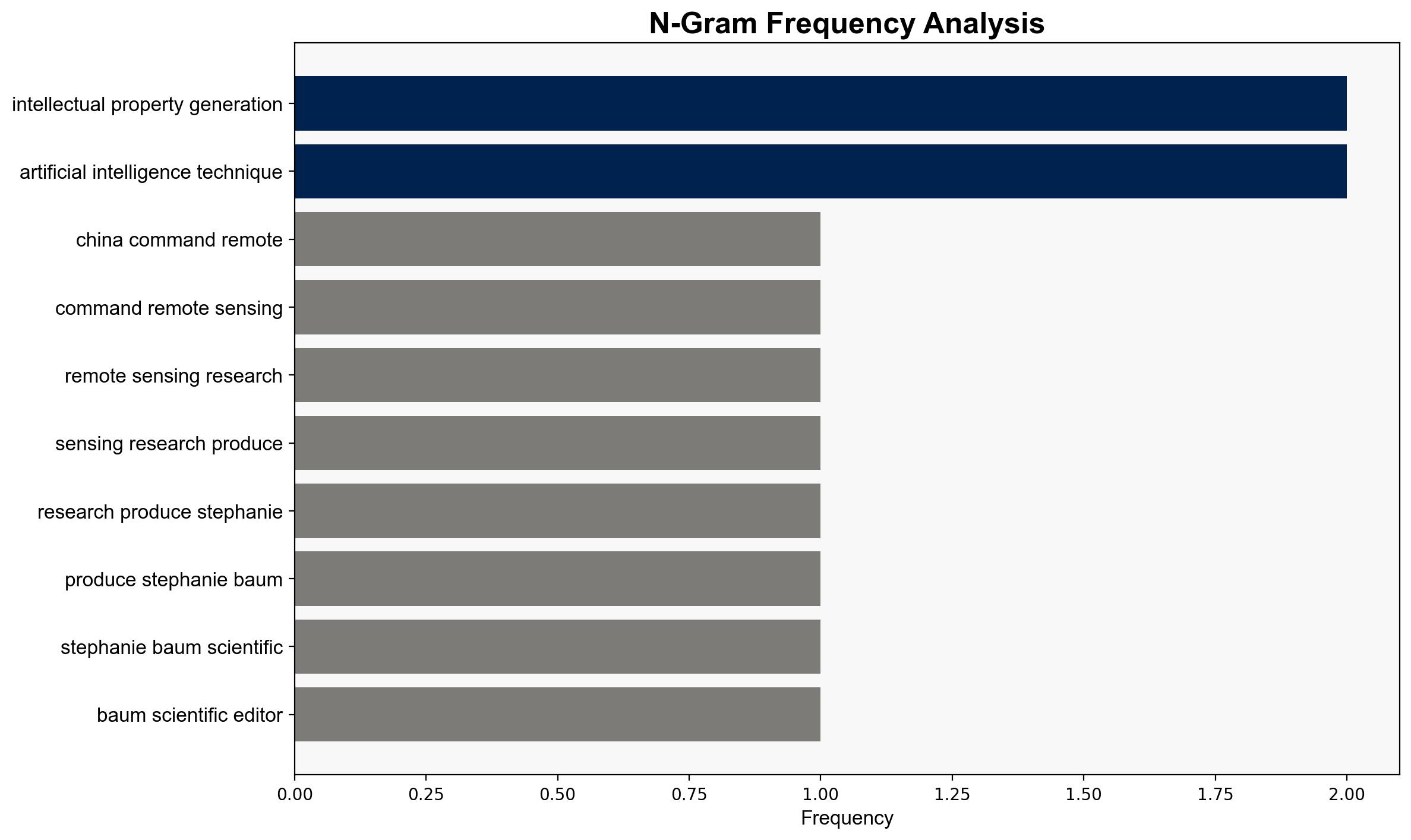China commands 47 of remote sensing research while US produces just 9 – Phys.Org
Published on: 2025-11-05
Intelligence Report: China commands 47 of remote sensing research while US produces just 9 – Phys.Org
1. BLUF (Bottom Line Up Front)
China’s dominance in remote sensing research, accounting for nearly half of global publications, signifies a strategic shift in technological leadership. The most supported hypothesis is that China’s state-driven funding and strategic prioritization have enabled this dominance. Confidence level: High. Recommended action: The US should enhance funding and strategic focus on remote sensing to regain competitiveness.
2. Competing Hypotheses
Hypothesis 1: China’s dominance in remote sensing research is primarily due to state-driven funding and strategic prioritization, leading to increased publication output and intellectual property generation.
Hypothesis 2: The decline in US remote sensing research output is due to a strategic shift in focus towards other emerging technologies, resulting in reduced funding and prioritization in this field.
3. Key Assumptions and Red Flags
Assumptions:
– Hypothesis 1 assumes that China’s funding is effectively translating into research output and innovation.
– Hypothesis 2 assumes that the US has consciously deprioritized remote sensing in favor of other technologies.
Red Flags:
– Potential bias in attributing research output solely to funding without considering other factors like international collaboration.
– Lack of detailed data on the quality and impact of publications, not just quantity.
4. Implications and Strategic Risks
China’s leadership in remote sensing could lead to increased geopolitical influence, particularly in areas like climate monitoring and national security. The US’s reduced presence in this field may weaken its technological edge and economic competitiveness. There is a risk of China setting global standards and norms in remote sensing technologies, potentially sidelining US interests.
5. Recommendations and Outlook
- Mitigation: Increase US federal funding for remote sensing research, potentially through NASA and NSF, to stimulate innovation and publication output.
- Opportunities: Foster international collaborations to leverage global expertise and resources.
- Projections:
- Best Case: US regains competitiveness through increased funding and strategic focus.
- Worst Case: Continued decline in US output leads to loss of technological leadership.
- Most Likely: Incremental improvements in US output with gradual policy adjustments.
6. Key Individuals and Entities
– Stephanie Baum
– Andrew Zinin
– Debra Laefer
– Jingru Hua
7. Thematic Tags
national security threats, cybersecurity, technological competitiveness, geopolitical influence




